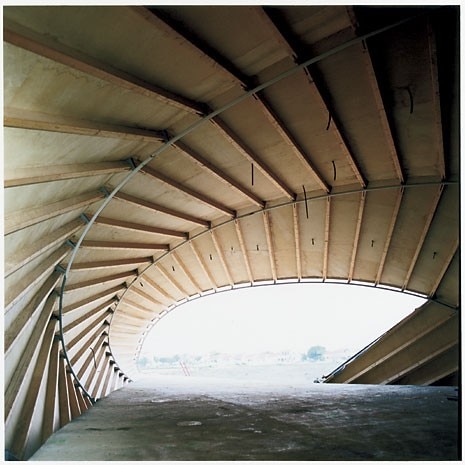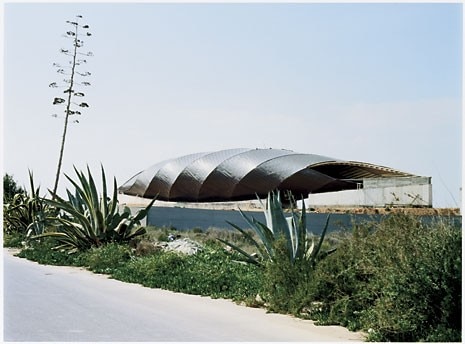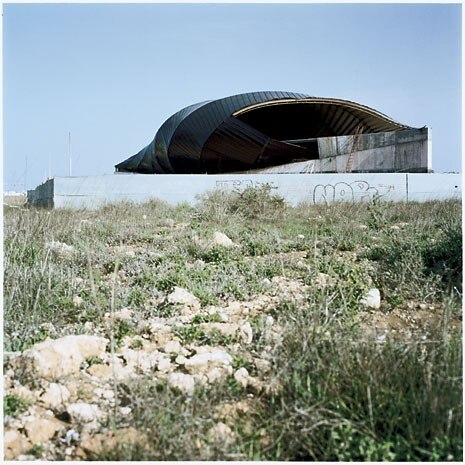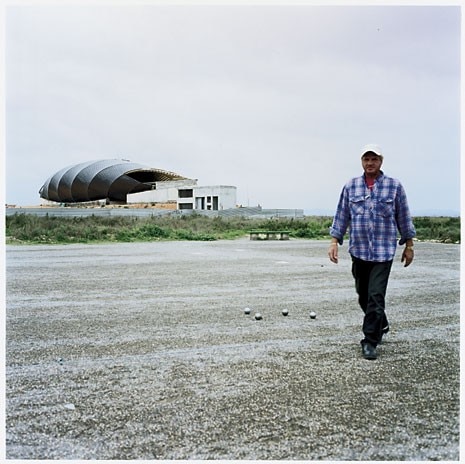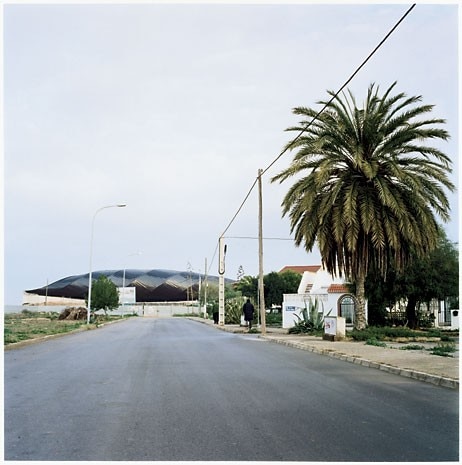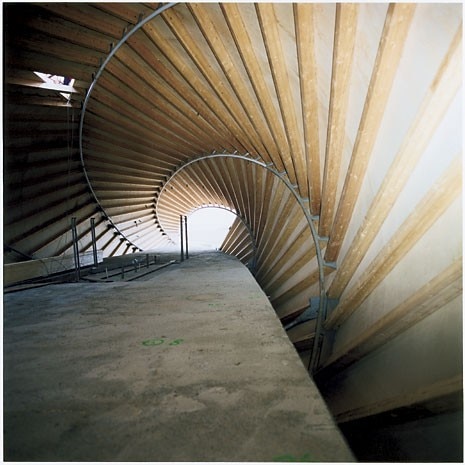The mysteriously deep, rapidly changing hues that characterise the lake’s appearance are largely the result of the very high levels of salinity and bacterial concentration in the water. Ito claims to have been influenced by the harsh beauty of the landscape, in particular the salt lakes, but the most obvious references in the Torrevieja Relaxation Park’s design are the spiralling seashells to be found on the nearby beaches (which also give the building its nickname: “La Concha Negra”, or the Black Seashell). Although the buildings themselves are not large, their geometry and construction are highly complex. In plan, the geometry of the shells is modelled around Bezier curves which hug the contours of the landscape, giving the shells their sinuous curvature. The spiral form is generated by the weaving together of five steel rods, each 60 mm in diameter, linked to one another by 180x90 mm timber joists. These are in turn enclosed with a plywood shell, resulting in a soft exoskeleton structure similar to that of a living creature. Additional rigidity is given to the overall structure by the floorplate, suspended from the spiral structure. By linking the five steel rods, it ties all the building’s components into a single structural element.
Project Title
Torrevieja Relaxation Centre
Design period
2001-2004
Location
Torrevieja (Alicante), Valencia, Spain
Client
City of Torrevieja
Site area
8 hectares
Total floor area
First phase: 345 m2
Total: 1245 m2
Architects
Toyo Ito & Associates, Architects
Toyo Ito, Rie Kigami, Ken-ichi Shinozaki
in collaboration with: Jose Maria Torres Nada, Antonio Marqueríe Tamayo, Joaquin Alvado Bañón
Structural engineers
Sasaki and Partners + Masahiro Ikeda Architecture Studio Augstin Obiol ÅF Obiol & Moya Arquitectes Associates, S.C.P.
Mechanical engineers
Kankyo Engineering Inc. (Fernando Lamas)
Biologist
Francisco Robledano
Contractor
Grupo Enerala + Jost
Rendering
Daniel Suárez Zamora
